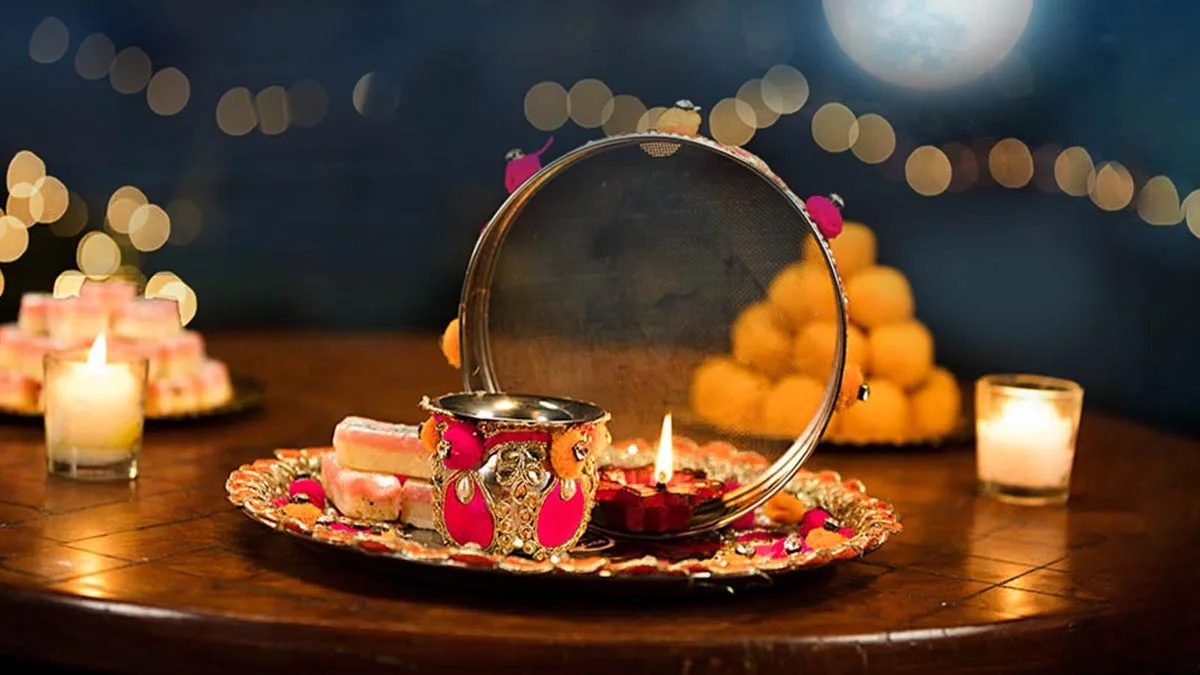Our Puja
Karva Chauth is a Hindu festival observed by married women for the well-being and longevity of their husbands.
The fast is observed from sunrise to moonrise, and married women gather in the evening for the Karva Chauth puja. Here are the general steps for the Karva Chauth puja:

Sankalp (Determination): Before starting the fast, the woman makes a vow or sankalp to observe the fast with sincerity and dedication for the well-being of her husband.
Preparation: Women wake up early in the morning, perform their morning ablutions, and wear traditional attire.
Fasting Begins: The fast begins at sunrise, and married women abstain from food and water throughout the day.
Sargi: Before sunrise, the mother-in-law prepares a special pre-dawn meal called “Sargi” for the daughter-in-law. This meal typically includes fruits, sweets, and other traditional foods.
Puja Thali Preparation: In the evening, married women prepare a puja thali (plate) with items like a small decorated earthen pot (Karva), a diya (lamp), sindoor (vermilion), mehndi (henna), bangles, and sweets.
Gathering for Puja: Women gather at a common place or someone’s house to perform the Karva Chauth puja. The puja is usually performed collectively in a group.
Storytelling: Before starting the puja, an elder woman or priest narrates the story of Karva Chauth, emphasizing the significance and rituals associated with the fast.
Karva Chauth Katha: The Karva Chauth Vrat Katha, a story related to the festival, is read or narrated. This story often involves Queen Veeravati and her dedication to observing the fast.
Puja Rituals: Women place the Karva (decorated pot) on a plate and fill it with water. They also place other items like sindoor, mehndi, and bangles on the puja thali. The women then perform the Karva Chauth puja rituals, offering prayers to the moon.
Moon Sighting: Once the moon is sighted, the women break their fast by looking at the moon through a sieve and then at their husband’s face. Some also offer water to the moon.
Husband’s Involvement: The husband may be a part of the process by offering water to the wife to break her fast.
Feasting: After breaking the fast, a special meal is prepared, and the family members share the food together.


It’s important to note that specific traditions and rituals may vary among different regions and communities. Additionally, some families may choose to perform the puja at home, while others may participate in community gatherings.
Error: Contact form not found.
